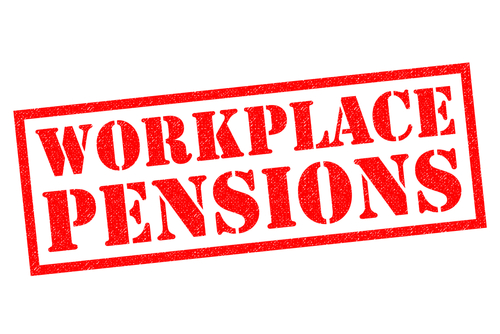News & Articles
Auto Enrolment: Do Higher Contributions Mean Greater Benefits?

How well are you prepared for retirement? This is an important question to ask because – in many cases – the answer is: ‘not well enough’. Just like many other developed countries, the UK faces a looming pensions crisis. The Government will struggle to provide people with sufficient income and workers are failing to put enough aside for their retirement.
The Government’s answer has been auto enrolment – a legal requirement for employers to automatically enrol staff into a workplace pension. This year the minimum contributions have risen from 2% to 5% – made up by contributions from the company, the employee and the Government.
While higher contributions may hurt, it’s vital to consider the many benefits involved.
Crisis Situation
People are not saving for their retirement in the way that they used to. According to an article in The Guardian, one in three people will have no savings and will have to rely on the state pension when they retire.
The problem is even more acute among millennials. Study after study finds that millennials are not saving enough for retirement.
There are many reasons for this. For starters, this generation is less well off than the one that went before. Investments are not performing well and setting up a pension requires an active choice on the part of the employee. Auto enrolment aims to change all that by making pensions the default option.
The program has been gradually rolled out over the last few years, starting with the largest companies and working its way down to incorporate medium and small businesses. Its introduction has not been without disruption. Some businesses and employees have struggled to understand their obligations.
But auto enrolment is here to stay. This process requires companies to automatically enrol employees into a workplace pension scheme. Both the employer and employee will pay into the scheme and the Government will also contribute via tax relief.
The minimum amount which could be saved started at 2% but from the start of this tax year, it increased to 5% and from next year, it will be 8%.
Opting Out
It seems to be a no brainer. You get free money from both your employer and the Government, and you also gain access to a relatively easy way to start saving for retirement. But auto enrolment is not compulsory, and the scheme includes an opt-out option for employees.
But why would you even want to opt out? Having a pension could be the best way to secure an adequate income after you retire. The basic state pension is already barely enough for people to live on and it is falling far behind inflation. No matter what your age, you’ll face a pretty bleak retirement if you haven’t made your own provisions, but the younger you are the worse it could be.
While some people might feel that they want to opt out to avoid the 3% (2.4% net) deduction and keep the money for the ‘here and now’, it’s essential to take a longer-sighted view.
By opting out, you instantly lose access to a range of key benefits. You would lose the employer contribution. You would lose the tax relief which effectively reduces the cost to the individual anyhow.
You would also lose access to a safe and secure retirement provision that caters to the needs and conditions of a modern-day workforce. And while many things are not as they appear on the surface, auto-enrolment is exactly what it appears to be – a great deal.
A Great Deal
According to Fidelity International, those who do not move to 5% could miss out on £250,000 by the time they retire. Their calculation finds that someone on an average salary of £35,000 who saved at the 2% rate would accrue an average of £94,092 by the time they reach retirement.
With the 5% rate, this rises to £235,229 and once the 8% rate kicks in it could rise to £366,445. All in all, this would be more than 3.5 times the amount saved if they stay at 2%.
Everyone’s situation is different and there are those who simply do not like pensions. However, the prospects for someone living off the minimum state pension are bleak; with the current state pension set at just £164 per week, this is not going to suffice most of us even in the short-term.
Without auto-enrolment, you would need to seek an alternative retirement provision and create a plan to support yourself during your working life and afterwards. Auto-enrolment stands head and shoulders above the alternatives as one of the most effective retirement savings options for employees of all ages and salary brackets.
Can You Ever Have Too Much Money?
If you feel that you have secured long-term wealth and have no need for auto-enrolment, we would like to refer you to wise words of Gary Briggs, Managing Director of Vintage Corporate: “Nobody ever went broke from saving too much money.”
So, if you are considering opting out due to higher contributions, we urge you to reconsider the benefits associated with auto-enrolment. Ultimately, as long as you intend to save for your retirement, this represents free cash from both your employer and the Government.
It may feel like you’re sacrificing a chunk of income now, but it could ensure you have a comfortable and healthy retirement in the future.
For advice and information on any aspect of auto-enrolment, contact the team at Vintage Corporate on 020 8371 5232 or email info@vintagecorporate.co.uk
RECENT POSTS
-
 Employee experience: Understanding how benefits fit into a bigger pictureMarch 17, 2025
Employee experience: Understanding how benefits fit into a bigger pictureMarch 17, 2025 -
 Employee trends: What to expect from the workforce in 2025January 28, 2025
Employee trends: What to expect from the workforce in 2025January 28, 2025 -
 Early exit: How the FIRE movement can inspire pension engagement among younger generationsDecember 20, 2024
Early exit: How the FIRE movement can inspire pension engagement among younger generationsDecember 20, 2024 -
 Easing the pressure: How benefits can help address sources of employee stressNovember 26, 2024
Easing the pressure: How benefits can help address sources of employee stressNovember 26, 2024 -
 Pension plan: Supporting employees on the road to retirementOctober 24, 2024
Pension plan: Supporting employees on the road to retirementOctober 24, 2024
